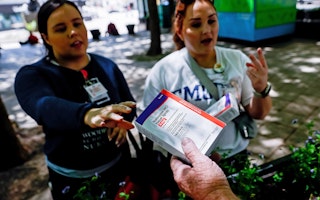Here’s Why Drug Policy Reform Is Gaining Momentum
By Michaela Montaner & Dan Werb

How do governments know drug enforcement is working? Generally by measuring seizures, arrests, and convictions—based on the assumption that the more drugs are confiscated, and the more drug users and dealers are imprisoned, the fewer drugs will be available.
That assumption appears to be wrong.
A new study by the International Centre for Science in Drug Policy finds that despite a tremendous increase in seizures, prices actually fell for most illegal drugs over the past 20 years—while purity increased. This raises serious questions about the effectiveness of international law enforcement efforts to reduce drug supply.
The study, supported by the Open Society Foundations and published in the British Medical Journal (Open Access Edition), reviewed indicators of drug supply in consumer markets such as Europe, the United States, and Australia, and drug seizures in those areas in addition to drug-producing regions such as Latin America, Afghanistan, and Southeast Asia.
In the United States, there was a 465 percent increase in the quantity of marijuana seized between 1990 and 2010, and an 86 percent drop in price. At the same time, the potency of marijuana in the United States increased by over 160 percent.
Similarly, in Europe, even though the quantity of cocaine confiscated rose by 137 percent between 1995 and 2009, the price fell by 51 percent. What’s worse, in addition to being cheaper, drugs are actually stronger than at any time in the past two decades.
If the goal of global illicit drug policy is to reduce supply and demand, it has failed to achieve those objectives.
Given the experience of the past two decades, it is hard to imagine how the goals of drug prohibition can be achieved under the current scenario. Based on this report and the extensive and growing literature preceding it, it appears as though enacting some form of state-based regulation that takes a public health (rather than criminal justice) approach to the issue of drug use is likely the best way to increase safety and reduce drug-related problems experienced by communities.
Implicit in such an approach is the need for governments to prioritize measures that evaluate the effectiveness of policies based on how they impact drug-related harms (like the number of overdose deaths or the incidence of HIV transmission) as opposed to simply relying on the amount of drugs that are seized each year.
Our current drug strategies are failing. It’s time we did something differently.
Read more about the study from the International Centre for Science in Drug Policy.
Michaela Montaner is communications coordinator for the International Centre for Science in Drug Policy.
Dan Werb is the director for the International Centre for Science in Drug Policy.


